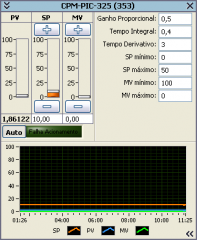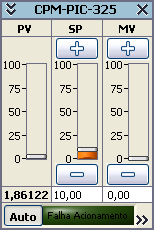Search the Community
Showing results for tags 'pid'.
-
I'm currently doing some driver creation in advance of getting actual hardware hooked up. One of the things I have to do is use a TEC temperature controller. This will be used on multiple stations with identical functionality, but we sort of "scrounged" for instruments, so we couldn't get the same model of TEC controller everywhere. We have 3 different ones (Newport 3700, Keithley 2510, ILX LDT-5980 if it matters). What I'm trying to figure out is if the PID constants that can be set on these devices are universal or not. They'll all be using the same sensor (10K thermistor) and the same TEC (with adapters for the different plugs), and theoretically they'll all be using voltage set points to drive the TECs. Basically, I would like to tune the PID for one setup, and then just be able to copy those values over to setups using the other two TEC controller models. But right now I can't tell if those PID constants are equivalent across all of the devices or not.
-
Hello, why does aurotune not work in the attached vi? Plus if I change the setpoint, shouldnt the PID output change as well? I.e., if say the pump needs to pump more, has to spin faster? or at least, have to ramp up once to fill to a new level and then oscillate again, since the amplitude is the same. Its a squarewave on the input, the help says, when the process is oscillating, outotune should come up with something. The squarewave kind of oscillates just around 2 levels? Thanks, MorboPID 01 autotune.vi
-
Hello, I found an example of an On-Off controller on Labview that I am attaching. I wanted to see how it would work the same VI replacing the thermostat a PID block and using the simplified model of a room in the form of the transfer function (R / (RCS +1)) but I'm not sure the right way to proceed. the integrator is to stay? I have to connect directly with the pid of the entrance to the furnace? I have to modify the VI? I hope in your kind suggestion thanks Alessandro On-Off Controller modificato.vi On-Off Controller.vi
-
Even after thre semesters of controls study in my BSEE program and multiple projects with manually tuned PID systems, I still feel like it's something of a black art. I've met oldschool engineers at my clients' offices with a preternatural talent for tuning PIDs, but when I asked them what their approach was, they couldn't really describe it. Just "intuition". What's your favorite book, tutorial, or other resource on tuning PIDs by hand? I've read all the Wikipedia articles and free online tutorials presented by college undrgrads or companies with a product to sell. I'm looking for the real deal here, the authentic guide to tuning mastery!
-
From the album: Supervisory System
The control group are displayed when the user clicks on sinoptic area. Initialy displayed in float mode, but the user can dock this window in a fixed position of the groups panel.© Petrobras - Petroleo Brasileiro SA
-
From the album: Supervisory System
This window is one of many groups windows. These windows has a fixed size resume area tha can be extended, when floating mode, tho show details of the control group.© Petrobras - Petroleo Brasileiro SA





